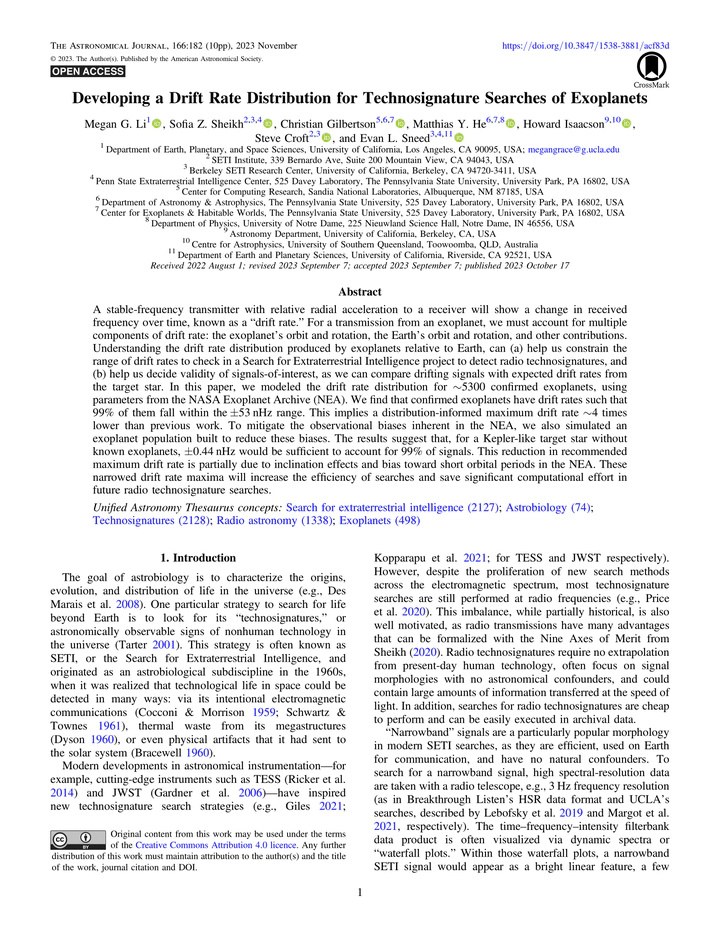Developing a Drift Rate Distribution for Technosignature Searches of Exoplanets

Abstract
A stable-frequency transmitter with relative radial acceleration to a receiver will show a change in received frequency over time, known as a “drift rate.” For a transmission from an exoplanet, we must account for multiple components of drift rate: the exoplanet’s orbit and rotation, the Earth’s orbit and rotation, and other contributions. Understanding the drift rate distribution produced by exoplanets relative to Earth, can (a) help us constrain the range of drift rates to check in a Search for Extraterrestrial Intelligence project to detect radio technosignatures, and (b) help us decide validity of signals-of-interest, as we can compare drifting signals with expected drift rates from the target star. In this paper, we modeled the drift rate distribution for ∼5300 confirmed exoplanets, using parameters from the NASA Exoplanet Archive (NEA). We find that confirmed exoplanets have drift rates such that 99% of them fall within the ±53 nHz range. This implies a distribution-informed maximum drift rate ∼4 times lower than previous work. To mitigate the observational biases inherent in the NEA, we also simulated an exoplanet population built to reduce these biases. The results suggest that, for a Kepler-like target star without known exoplanets, ±0.44 nHz would be sufficient to account for 99% of signals. This reduction in recommended maximum drift rate is partially due to inclination effects and bias toward short orbital periods in the NEA. These narrowed drift rate maxima will increase the efficiency of searches and save significant computational effort in future radio technosignature searches.